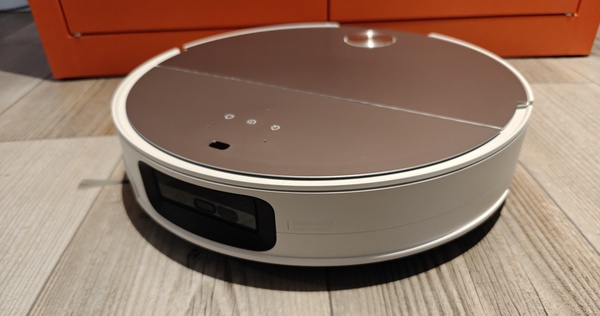
One of the biggest players in the robot vacuum market, Roborock, has been pushing the boundaries with innovation and smart ideas for several years now.
In early 2025, Roborock unveiled a fresh wave of new products, which hit store shelves that same spring. We got our hands on the company's flagship release, the Roborock Saros 10, even before it officially launched in Europe.
The big headline feature of the Roborock Saros 10? It's the lowest-profile robot vacuum currently on the market. In other words, it should fit under sofas and beds that other robot vacuums simply can't squeeze beneath.
Of course, it's also a feature-packed flagship device - a fact reflected in its hefty $1600/€1500 price tag. The Saros 10 is a mopping, self-emptying, self-washing, obstacle-dodging robot vacuum - the whole package.
We put the Saros 10 through our traditional real-world testing: the robot was tasked with cleaning the floors of a typical Nordic home over a period of two months. During that time, it was the only tool used for floor cleaning - no brooms or vacuums allowed.
The test period coincided with the tail end of the Finnish spring, meaning mud, grit, and sand were constantly being tracked indoors - the perfect storm for a proper stress test.
So, what kind of machine is the Roborock Saros 10, really?
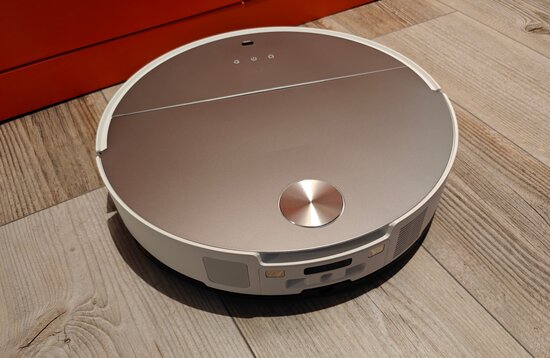
At first glance, the Roborock Saros 10 looks every bit like your typical modern robot vacuum: a round disc with a smaller, round LIDAR turret on top.
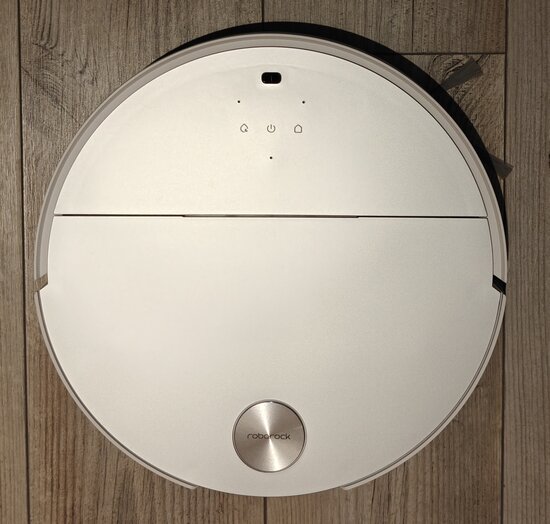
From the top, there's really nothing to distinguish the Saros from its competitors.

The top cover can be removed, of course, in case you need manual access to the robot's internal dustbin.
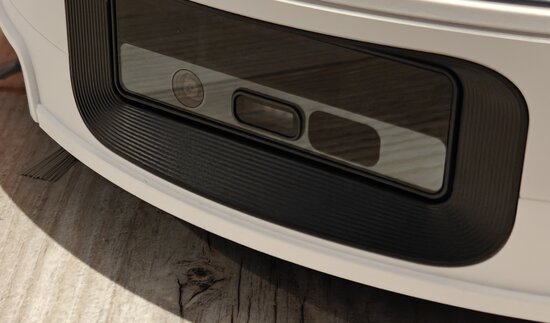
Things get more interesting around the front, where the premium price starts to show. Here you'll find Roborock's Reactive AI sensor array and onboard vision system, designed to spot and avoid everyday floor clutter - like socks, for example.

Flip the unit over, and you'll spot a few intriguing details. Roborock opted to use a single roller brush for the Saros 10. Historically, this has been a drawback, as dual-roller models have typically delivered stronger vacuum performance. But recent exceptions to that rule suggest it's worth holding judgment until after full testing.
One especially notable design choice is the mop: instead of the spinning mop pads common in this price range, the Saros 10 uses a flat mopping plate - a feature more familiar from budget models under $250/€200, where they're often little more than damp cloths dragged behind the vacuum.
Roborock's decision to go with a mopping plate instead of rotating pads likely comes down to height: the goal here was to make the lowest-profile robot vacuum possible, and rotating mop pads simply require more vertical space.
To make up for this, Roborock has given the traditional mop plate a high-tech twist. It now vibrates at high frequency during cleaning, mimicking the scrubbing action of rotating pads - just in a lateral, vibrating motion instead.
The mop plate can also lift itself up when crossing carpets, just like its rotating counterparts on rival models - at least on paper.
The side brush is pleasingly long, which generally translates to better reach into corners and along edges.
And as a final touch, the Saros 10 includes a tiny, dedicated corner-mop pad - a small but welcome feature seen in some of Roborock's earlier high-end models.

The Saros 10's dock is a bit of a beast. It's bulky, and the design feels more "industrial" than elegant. It does make you wonder why Roborock keeps designing a new dock for almost every model - consistency clearly isn't a priority here.
But there's a good reason for the size: this dock includes both self-emptying and automatic mop-washing capabilities, like other high-end stations.

And yes - the mop plate is automatically cleaned in the dock. So while it may look like a basic mopping setup, in practice it works just like the high-end rotating systems, requiring no extra effort from the user.
The dock houses two large water tanks - one for clean water and one for dirty - with a generous (3L and 4L) capacity, meaning you won't be topping them up or emptying them too often.
Roborock's proprietary smartphone app comfortably sits above average in the world of robot vacuum apps. It's noticeably clearer and more polished than what most other Chinese manufacturers typically offer.

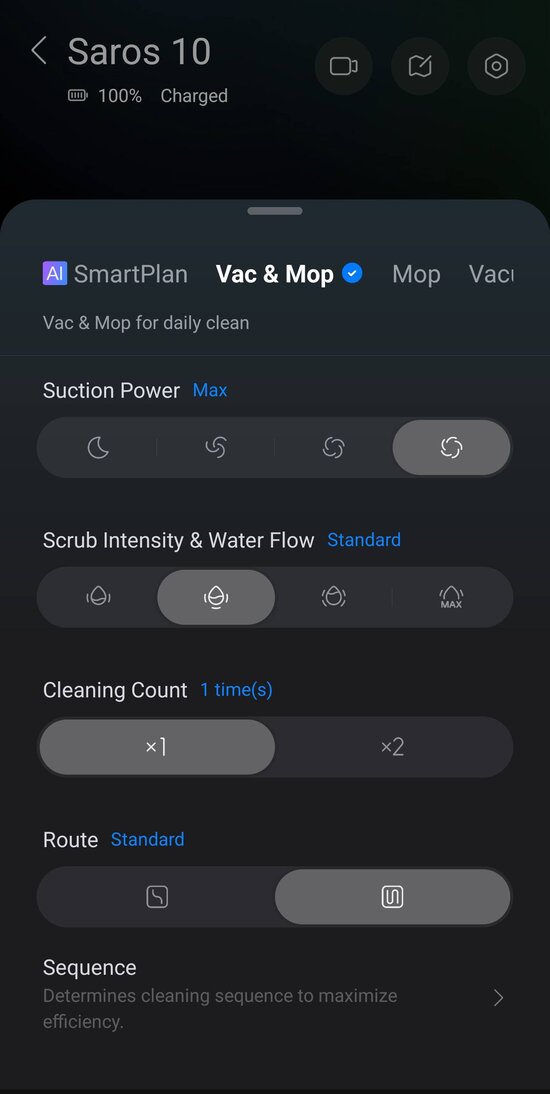 Main interface and the quick settings panel used to configure full-apartment cleaning routines
Main interface and the quick settings panel used to configure full-apartment cleaning routines
Unfortunately, Roborock still has a quite limited number of supported languages. App is available in major languages, yes, but lacks most of the smaller languages. Given the sheer number of menu items and options, a reasonable grasp of English is a must if your own native language isn't within the list of supported languages.
And, as is typical in this price range, using the smartphone app is practically mandatory if you want to truly unlock the vacuum's potential.
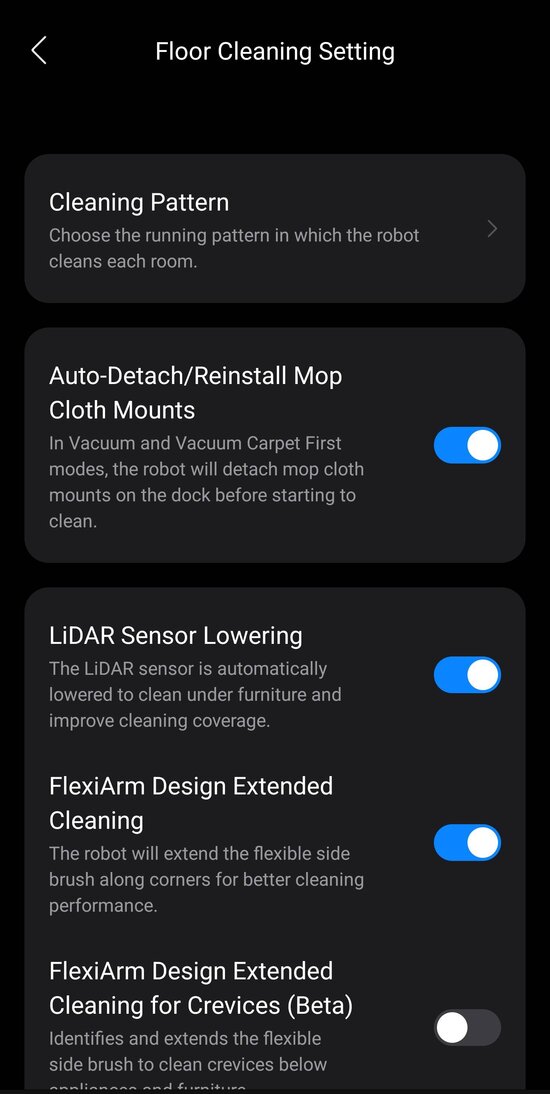

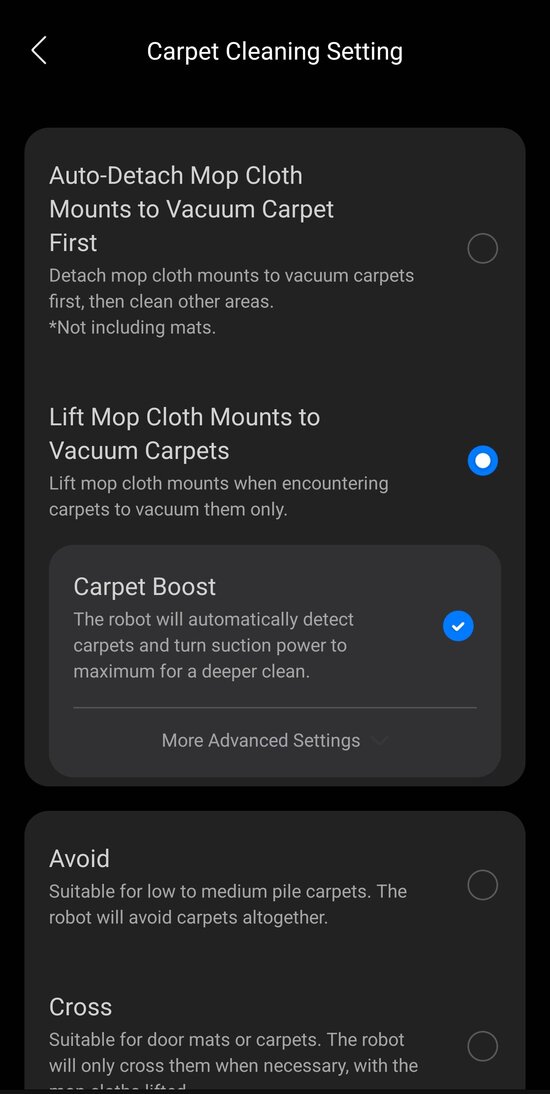


 there's a dizzying amount of configuration options
there's a dizzying amount of configuration options
Through the app, you can schedule cleanings, fine-tune obstacle avoidance sensitivity, and even control how much water the mop should dispense in different rooms. You can also set "quiet hours" during which the robot won't vacuum or empty its dustbin.



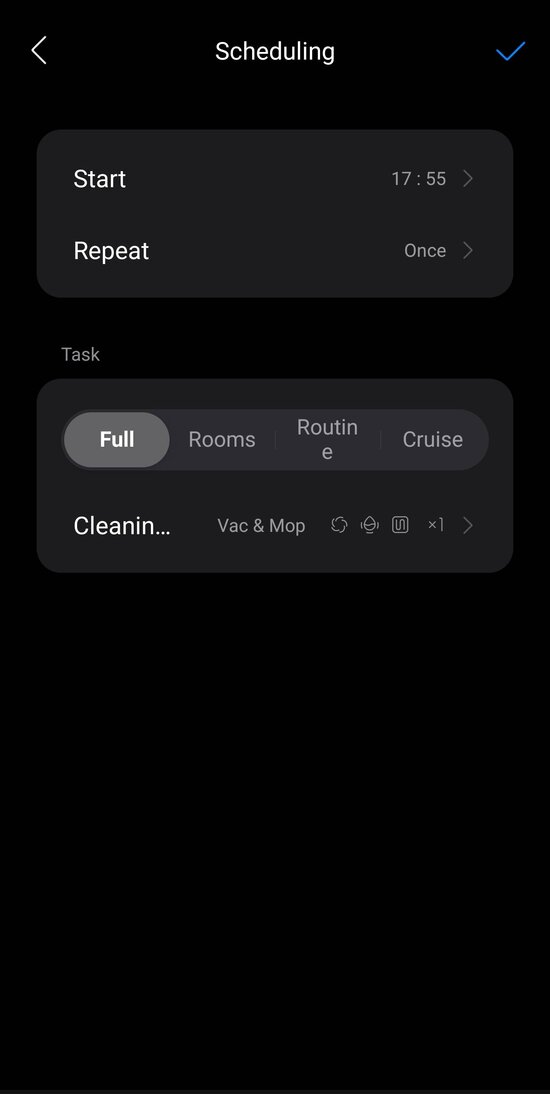
Alongside scheduling, the map editor is one of the app's most important tools. You can divide your home into rooms and zones, and assign custom cleaning profiles to each. For example, the kitchen could be vacuumed twice, the hallway vacuumed and mopped twice, and the bedroom just vacuumed once per session.
The app can feel a bit overwhelming at times due to its wealth of features, but to Roborock's credit, they've gradually refined the menu layout to make things a bit more user-friendly. As long as your English is decent, navigating Roborock's app is relatively straightforward and intuitive.
I was a bit skeptical about the cleaning capabilities of the Roborock Saros 10, mainly because it features a couple of technical elements that don't typically promise "perfect" cleaning performance.
First off, the Saros 10 has only one cleaning brush-the large roller underneath the robot that collects dust and debris during vacuuming. Secondly, it uses a mop plate instead of spinning mop pads. Mop plates often bring to mind cheap "mopping" robot vacuums, which essentially just drag a damp cloth across the floor, smearing dirt rather than removing it.
However, technically speaking, the mop plate in the Saros works quite differently. It actually scrubs the floor, moving back and forth at high speed in rapid vibrations. The method for keeping the mop plate clean during a session is similar to what other competitors in this price range offer: the robot returns to the dock approximately every 15 minutes to wash the mop plate. The dock then sucks the dirty water into a separate tank and rinses the mop with clean water.
Despite my doubts, the Roborock Saros 10 pleasantly surprised me. The cleaning results were very good-even though the test period coincided with the worst of spring's mud season. The Saros 10 managed to vacuum up sand and grit that had been tracked into the hallway, which can be a real challenge for some robots.
The mopping results were also impressive. In my opinion, the Roborock's mop plate held up well even compared to spinning mop pads when it came to general floor cleaning. Sure, for stuck-on stains the outcome might be different-but I believe those are better tackled manually, no matter what kind of robot you're using.
Edges and corners also came out clean and stayed that way. During our testing period, we ran the robot about three times a week, and each time it cleaned the entire apartment thoroughly.
Roborock claims a battery runtime of 220 minutes for the Saros, which is well above average-even among high-end robot vacuums.
In our tests, a complete cleaning session of a small, two-bedroom apartment using a double-pass approach took a little over an hour. This includes periodic mop cleanings during the run. The mop was typically washed every 30 minutes, so for a one-hour cleaning session, it was cleaned once before starting, once midway through, and once again at the end.
We estimate that cleaning a large detached house with around 150 m² of floor area in one pass would take approximately 150 minutes-or 2.5 hours. The battery should handle that just fine, but a double-pass cleaning of the whole house would likely require a recharge in between.
The Roborock Saros 10 also charges relatively quickly. According to the manufacturer, the battery can recharge from nearly empty to full in about two and a half hours. Based on this, I'd say that during a typical workday, the Saros 10 could easily vacuum and mop even a large 200 m² home twice, with one mid-cleaning recharge.
The Roborock Saros 10 has an excellent feature that has started to become more common in higher-end robots since the end of 2024: it can climb.
Climbing might be a bit of an exaggeration, but the robot is capable of lifting its body by a couple of centimeters, and thanks to this trick, it can, for example, climb over thresholds. However, the thresholds in Nordic bathrooms are usually significantly higher, and unfortunately, the Saros wasn't able to climb over the threshold into our test bathroom-even though it tried.
But beyond just thresholds, Saros's climbing function proved useful in some other surprising places. The robot managed to lift itself up onto the edge of a rug just at the right moment, preventing the rug from getting crumpled when the robot passed over it. In fact, the Saros was one of the few robots we tested that didn't crumple our kitchen rug at all during the entire test period.
Additionally, the robot applied its lifting technique to overcome various obstacles. For instance, the "robot killer," an IKEA clothing rack, was one obstacle the robot couldn't avoid, but with its body-lifting technique, it was always able to wriggle free from the rack's legs-without getting stuck once. (Unfortunately, we didn't manage to capture a representative video of this, as the situations happened too quickly.)
The Roborock Saros 10 also includes smart obstacle avoidance using a camera. However, on this front, Roborock hasn't yet perfected a solution for everything.


In the image where the robot is in the hallway, it has somehow gotten behind the hallway door but can't get out anymore - and is completely stuck.
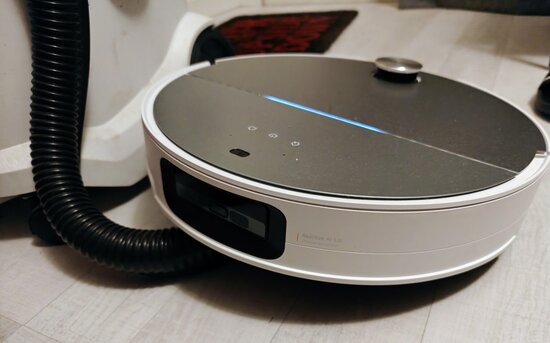
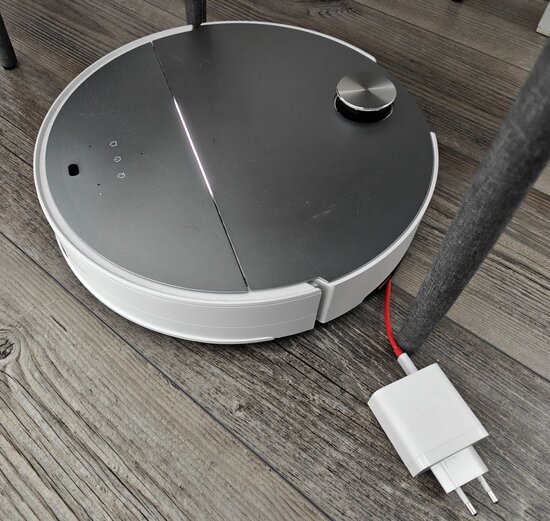
During our testing, the Saros 10 did quite well avoiding obstacles: it only ran over phone charger cables a couple of times during the entire two-month test period, and socks only got stuck between its rollers three times. However, one time, the robot's obstacle detection somehow failed to notice a long-sleeved shirt that had been left on the floor, and the robot proceeded to eat it.
It's worth noting that when testing obstacle-avoiding robots, we never pick up things that are left on the floor before starting the robot.
So, camera-based obstacle avoidance worked well overall, but not perfectly.
Unfortunately, we also encountered two more unusual problems. One of them was something we've never run into before.

The first problem was related to the robot's obstacle detection, which reliably detects socks (most of the time), but apparently doesn't recognize dropped mail. The robot didn't even recognize the clear contrast difference when a white letter or magazine from the mailbox had fallen on the dark floor. As a result, the Saros 10 managed to eat both a voter registration letter and a week's worth of comic books that had arrived in the mail. Other robots we tested with camera-based obstacle avoidance were able to avoid mail left on the floor, or at least, that was never an issue in our previous tests (except for basic robots with no camera-based avoidance).
However, the more peculiar issue arose with carpets.
The Saros 10 handled regular carpets and large rugs just fine. But small doormats seemed to be completely impossible for the robot to deal with.
The Saros 10 did a great job recognizing that there was a doormat in the hallway. The robot lifted its mop plate as it arrived at the mat, and easily made its way over it, even switching to a more powerful vacuuming mode, as it should do on mats.
However, when leaving the mat, the Saros 10 incorrectly assessed that the mat had ended too early, and lowered its mop plate right onto the edge of the doormat. As a result, the robot dragged the doormat along the floor, wedged between the mat and the floor. This happened every single time-sometimes the mat was dragged just a meter, and other times it was dragged much further.
And the problem wasn't limited to just one mat; a larger, heavier, and clearly thicker doormat in front of the balcony door experienced the exact same fate-every time.
And of course, the Saros 10's most important selling point should be mentioned... It's incredibly low-lower than any other Roborock model to date. At less than eight centimeters tall, the Saros 10 is two to three centimeters shorter than most robots in this price range.
For some buyers, this won't matter at all, but for others, that extra height clearance is significant, as sofas, beds, or TV stands might be just low enough that most robots can't get underneath.
The low profile is achieved through a clever trick: the lidar sensor on top of the robot lowers itself when the robot needs to squeeze under a low obstacle. This works brilliantly, and for example, the drying rack in our test home was exactly eight centimeters tall-it was fascinating to watch how the Saros cleverly "shrunk" itself and vacuumed under the rack without needing to dodge around it.
Overall, the Roborock Saros 10 is a very mixed package when it comes to obstacle avoidance. Its climbing mechanism saves it from most tricky situations that would trap many competitors. Additionally, its low profile will certainly appeal to buyers whose homes have just the right low sofas or beds. However, its camera-based obstacle avoidance is far from perfect, and its behavior with small rugs was puzzling.
During our testing, the only peculiar issue we encountered was that the robot complained about the need to clean the water tank filter after a month of use. This was an interesting problem because there were no clear instructions on how to clean the water tank filter either in the robot's manual or online. With a bit of digging, though, we found a solution.
Another noteworthy point is the soundscape, which is a bit different in the Saros compared to the other robots we tested.
The loudest noise, of course, comes when the robot returns to its charging station and empties its internal dustbin, just like all other self-emptying robot vacuums.
Additionally, the self-cleaning mop creates its own soundscape when it's washing itself, accompanied by a bubbling and gurgling noise that lasts a few minutes. And at the end of cleaning, the robot starts drying the mop, which causes a quiet hum for a couple of hours (the drying time can be adjusted through the app).
The vacuuming itself produces the typical steady, slightly annoying vacuuming sound that you wouldn't want to listen to in the same room for too long. But the most unusual sound comes from the mopping, where the vibration of the mop plate creates a small buzzing sound. Initially, this sound caused a bit of concern, as we had to check whether something had broken. But no, the vibrating movement of the mop is of course intentional, as we discussed earlier. It's not an overly irritating hum, but it's something worth being aware of if you're considering buying the Saros.
With the Saros 10, Roborock has decided to focus on solving one very specific problem: its key selling point is undoubtedly its low profile. The Saros 10's appeal is precisely for those homes where most robot vacuums are just a little too tall to fit under sofas or beds.
That said, the Saros 10 is much more than just a vacuum that fits into tight spaces-it performs exceptionally well in terms of cleaning results, offers high-quality mopping, and even Roborock's mobile app is quite good.
But... while Roborock's obstacle-avoidance algorithms are solid, they're not perfect. The frustrating issue with dragging rugs and the small problems with avoiding obstacles left on the floor would be more acceptable at a price below $1000/€1000, but at the current price of $1600/€1500, these are unforgiving problems that lower the overall score.
All in all, the Roborock Saros 10 is an excellent package. However, its price should drop below $1000/€1000 to make it a more recommendable purchase in terms of value for money-because while it's otherwise a great option, its obstacle avoidance is not quite on par with the best competitors.
There are now quite a few alternatives in the category of mopping, self-emptying, obstacle-avoiding robot vacuums that cost over thousand euros/dollars.
Roborock itself offers several models, such as the Roborock S8 MaxV Ultra, which is currently available at a noticeably lower price than the Saros. Both Roborock models suffer from having obstacle avoidance that is, at best, only average in this price range.
However, if you don't specifically need a low-profile robot and want a Roborock, the S8 MaxV Ultra could be a good alternative. The Saros 10 does outperform the S8 MaxV Ultra, though, thanks to its climbing function, which helps it get out of tricky situations more often (and of course, it can cross thresholds). Additionally, the Saros' obstacle avoidance is generally better than the S8 MaxV Ultra's-after all, the S8 is the older model of the two.
The best option in the high-end vacuum category (as of May 2025) is, in our opinion, the Samsung Bespoke Jet Bot Combo AI+, whose obstacle avoidance is clearly a couple of steps better than Roborock's. However, the Saros 10 does surpass the Samsung in a couple of areas: the Saros can climb over thresholds and fits under lower furniture better than the Samsung. On the other hand, the Samsung is occasionally available at much better prices through discounts-and in terms of obstacle avoidance and reliability, it outperforms Roborock.
Roomba also offers its own solutions in this category, such as the Roomba Combo j9+ that we've tested previously, too. Roomba's obstacle avoidance is slightly better than the Saros, but on the flip side, Roomba can't wash its mop like the Roborock Saros 10, and its mopping function is clearly worse than Roborock's.

Overall, Roborock is an excellent product, but in this $1000+/€1000+ price range, obstacle avoidance and its effectiveness have become the key factors that distinguish robot vacuums from each other the most. Unfortunately, the Roborock Saros 10 is a couple of steps behind its best competitors in terms of obstacle avoidance-and for that reason, we've deducted half a star in this review.
The big headline feature of the Roborock Saros 10? It's the lowest-profile robot vacuum currently on the market. In other words, it should fit under sofas and beds that other robot vacuums simply can't squeeze beneath.
Of course, it's also a feature-packed flagship device - a fact reflected in its hefty $1600/€1500 price tag. The Saros 10 is a mopping, self-emptying, self-washing, obstacle-dodging robot vacuum - the whole package.
We put the Saros 10 through our traditional real-world testing: the robot was tasked with cleaning the floors of a typical Nordic home over a period of two months. During that time, it was the only tool used for floor cleaning - no brooms or vacuums allowed.
The test period coincided with the tail end of the Finnish spring, meaning mud, grit, and sand were constantly being tracked indoors - the perfect storm for a proper stress test.
So, what kind of machine is the Roborock Saros 10, really?
Table of Contents
- Design and build
- Specifications
- Mobile app
- Mopping and Vacuuming
- Battery Life
- Obstacle avoidance, rugs and carpets
- Other stuff
- Summary
- Alternatives
- Pros
- Cons
- Rating
Design and Build

At first glance, the Roborock Saros 10 looks every bit like your typical modern robot vacuum: a round disc with a smaller, round LIDAR turret on top.

From the top, there's really nothing to distinguish the Saros from its competitors.

The top cover can be removed, of course, in case you need manual access to the robot's internal dustbin.

Things get more interesting around the front, where the premium price starts to show. Here you'll find Roborock's Reactive AI sensor array and onboard vision system, designed to spot and avoid everyday floor clutter - like socks, for example.

Flip the unit over, and you'll spot a few intriguing details. Roborock opted to use a single roller brush for the Saros 10. Historically, this has been a drawback, as dual-roller models have typically delivered stronger vacuum performance. But recent exceptions to that rule suggest it's worth holding judgment until after full testing.
One especially notable design choice is the mop: instead of the spinning mop pads common in this price range, the Saros 10 uses a flat mopping plate - a feature more familiar from budget models under $250/€200, where they're often little more than damp cloths dragged behind the vacuum.
Roborock's decision to go with a mopping plate instead of rotating pads likely comes down to height: the goal here was to make the lowest-profile robot vacuum possible, and rotating mop pads simply require more vertical space.
To make up for this, Roborock has given the traditional mop plate a high-tech twist. It now vibrates at high frequency during cleaning, mimicking the scrubbing action of rotating pads - just in a lateral, vibrating motion instead.
The mop plate can also lift itself up when crossing carpets, just like its rotating counterparts on rival models - at least on paper.
The side brush is pleasingly long, which generally translates to better reach into corners and along edges.
And as a final touch, the Saros 10 includes a tiny, dedicated corner-mop pad - a small but welcome feature seen in some of Roborock's earlier high-end models.

The Saros 10's dock is a bit of a beast. It's bulky, and the design feels more "industrial" than elegant. It does make you wonder why Roborock keeps designing a new dock for almost every model - consistency clearly isn't a priority here.
But there's a good reason for the size: this dock includes both self-emptying and automatic mop-washing capabilities, like other high-end stations.

And yes - the mop plate is automatically cleaned in the dock. So while it may look like a basic mopping setup, in practice it works just like the high-end rotating systems, requiring no extra effort from the user.
The dock houses two large water tanks - one for clean water and one for dirty - with a generous (3L and 4L) capacity, meaning you won't be topping them up or emptying them too often.
Roborock Saros 10 tech specs
| Robot measurements | 350 x 353 x 79.8 mm (LDS lowered)
350 x 353 x 93.5 mm (LDS raised) |
| Weight of the robot | 4.1 kg |
| Dock measurements | 409 x 440 x 470 mm |
| Dock weight | 8.0 kg |
| Battery | 6400 mAh |
| Battery life | appx. 3 hours (according to Roborock) |
| Charging time | 150 minutes (according to Roborock) |
| Suction power | 22 000 Pa |
| Noise | 67 dB(A) |
| Clean water tank | 4 liters |
| Dirty water tank | 3 liters |
| Dust bag size | 2.5 liters |
| Max floor area covered with one charge | Up to 400 m² (according to Roborock / vacuuming only) |
Smartphone App
Roborock's proprietary smartphone app comfortably sits above average in the world of robot vacuum apps. It's noticeably clearer and more polished than what most other Chinese manufacturers typically offer.

 Main interface and the quick settings panel used to configure full-apartment cleaning routines
Main interface and the quick settings panel used to configure full-apartment cleaning routinesUnfortunately, Roborock still has a quite limited number of supported languages. App is available in major languages, yes, but lacks most of the smaller languages. Given the sheer number of menu items and options, a reasonable grasp of English is a must if your own native language isn't within the list of supported languages.
And, as is typical in this price range, using the smartphone app is practically mandatory if you want to truly unlock the vacuum's potential.





 there's a dizzying amount of configuration options
there's a dizzying amount of configuration optionsThrough the app, you can schedule cleanings, fine-tune obstacle avoidance sensitivity, and even control how much water the mop should dispense in different rooms. You can also set "quiet hours" during which the robot won't vacuum or empty its dustbin.




Alongside scheduling, the map editor is one of the app's most important tools. You can divide your home into rooms and zones, and assign custom cleaning profiles to each. For example, the kitchen could be vacuumed twice, the hallway vacuumed and mopped twice, and the bedroom just vacuumed once per session.
The app can feel a bit overwhelming at times due to its wealth of features, but to Roborock's credit, they've gradually refined the menu layout to make things a bit more user-friendly. As long as your English is decent, navigating Roborock's app is relatively straightforward and intuitive.
Mopping and Vacuuming
I was a bit skeptical about the cleaning capabilities of the Roborock Saros 10, mainly because it features a couple of technical elements that don't typically promise "perfect" cleaning performance.
First off, the Saros 10 has only one cleaning brush-the large roller underneath the robot that collects dust and debris during vacuuming. Secondly, it uses a mop plate instead of spinning mop pads. Mop plates often bring to mind cheap "mopping" robot vacuums, which essentially just drag a damp cloth across the floor, smearing dirt rather than removing it.
However, technically speaking, the mop plate in the Saros works quite differently. It actually scrubs the floor, moving back and forth at high speed in rapid vibrations. The method for keeping the mop plate clean during a session is similar to what other competitors in this price range offer: the robot returns to the dock approximately every 15 minutes to wash the mop plate. The dock then sucks the dirty water into a separate tank and rinses the mop with clean water.
Despite my doubts, the Roborock Saros 10 pleasantly surprised me. The cleaning results were very good-even though the test period coincided with the worst of spring's mud season. The Saros 10 managed to vacuum up sand and grit that had been tracked into the hallway, which can be a real challenge for some robots.
The mopping results were also impressive. In my opinion, the Roborock's mop plate held up well even compared to spinning mop pads when it came to general floor cleaning. Sure, for stuck-on stains the outcome might be different-but I believe those are better tackled manually, no matter what kind of robot you're using.
Edges and corners also came out clean and stayed that way. During our testing period, we ran the robot about three times a week, and each time it cleaned the entire apartment thoroughly.
Battery Life
Roborock claims a battery runtime of 220 minutes for the Saros, which is well above average-even among high-end robot vacuums.
In our tests, a complete cleaning session of a small, two-bedroom apartment using a double-pass approach took a little over an hour. This includes periodic mop cleanings during the run. The mop was typically washed every 30 minutes, so for a one-hour cleaning session, it was cleaned once before starting, once midway through, and once again at the end.
We estimate that cleaning a large detached house with around 150 m² of floor area in one pass would take approximately 150 minutes-or 2.5 hours. The battery should handle that just fine, but a double-pass cleaning of the whole house would likely require a recharge in between.
The Roborock Saros 10 also charges relatively quickly. According to the manufacturer, the battery can recharge from nearly empty to full in about two and a half hours. Based on this, I'd say that during a typical workday, the Saros 10 could easily vacuum and mop even a large 200 m² home twice, with one mid-cleaning recharge.
Obstacle Avoidance and Carpets
The Roborock Saros 10 has an excellent feature that has started to become more common in higher-end robots since the end of 2024: it can climb.
Climbing might be a bit of an exaggeration, but the robot is capable of lifting its body by a couple of centimeters, and thanks to this trick, it can, for example, climb over thresholds. However, the thresholds in Nordic bathrooms are usually significantly higher, and unfortunately, the Saros wasn't able to climb over the threshold into our test bathroom-even though it tried.
But beyond just thresholds, Saros's climbing function proved useful in some other surprising places. The robot managed to lift itself up onto the edge of a rug just at the right moment, preventing the rug from getting crumpled when the robot passed over it. In fact, the Saros was one of the few robots we tested that didn't crumple our kitchen rug at all during the entire test period.
Additionally, the robot applied its lifting technique to overcome various obstacles. For instance, the "robot killer," an IKEA clothing rack, was one obstacle the robot couldn't avoid, but with its body-lifting technique, it was always able to wriggle free from the rack's legs-without getting stuck once. (Unfortunately, we didn't manage to capture a representative video of this, as the situations happened too quickly.)
The Roborock Saros 10 also includes smart obstacle avoidance using a camera. However, on this front, Roborock hasn't yet perfected a solution for everything.


In the image where the robot is in the hallway, it has somehow gotten behind the hallway door but can't get out anymore - and is completely stuck.


During our testing, the Saros 10 did quite well avoiding obstacles: it only ran over phone charger cables a couple of times during the entire two-month test period, and socks only got stuck between its rollers three times. However, one time, the robot's obstacle detection somehow failed to notice a long-sleeved shirt that had been left on the floor, and the robot proceeded to eat it.
It's worth noting that when testing obstacle-avoiding robots, we never pick up things that are left on the floor before starting the robot.
So, camera-based obstacle avoidance worked well overall, but not perfectly.
Unfortunately, we also encountered two more unusual problems. One of them was something we've never run into before.

The first problem was related to the robot's obstacle detection, which reliably detects socks (most of the time), but apparently doesn't recognize dropped mail. The robot didn't even recognize the clear contrast difference when a white letter or magazine from the mailbox had fallen on the dark floor. As a result, the Saros 10 managed to eat both a voter registration letter and a week's worth of comic books that had arrived in the mail. Other robots we tested with camera-based obstacle avoidance were able to avoid mail left on the floor, or at least, that was never an issue in our previous tests (except for basic robots with no camera-based avoidance).
However, the more peculiar issue arose with carpets.
The Saros 10 handled regular carpets and large rugs just fine. But small doormats seemed to be completely impossible for the robot to deal with.
The Saros 10 did a great job recognizing that there was a doormat in the hallway. The robot lifted its mop plate as it arrived at the mat, and easily made its way over it, even switching to a more powerful vacuuming mode, as it should do on mats.
However, when leaving the mat, the Saros 10 incorrectly assessed that the mat had ended too early, and lowered its mop plate right onto the edge of the doormat. As a result, the robot dragged the doormat along the floor, wedged between the mat and the floor. This happened every single time-sometimes the mat was dragged just a meter, and other times it was dragged much further.
And the problem wasn't limited to just one mat; a larger, heavier, and clearly thicker doormat in front of the balcony door experienced the exact same fate-every time.
And of course, the Saros 10's most important selling point should be mentioned... It's incredibly low-lower than any other Roborock model to date. At less than eight centimeters tall, the Saros 10 is two to three centimeters shorter than most robots in this price range.
For some buyers, this won't matter at all, but for others, that extra height clearance is significant, as sofas, beds, or TV stands might be just low enough that most robots can't get underneath.
The low profile is achieved through a clever trick: the lidar sensor on top of the robot lowers itself when the robot needs to squeeze under a low obstacle. This works brilliantly, and for example, the drying rack in our test home was exactly eight centimeters tall-it was fascinating to watch how the Saros cleverly "shrunk" itself and vacuumed under the rack without needing to dodge around it.
Overall, the Roborock Saros 10 is a very mixed package when it comes to obstacle avoidance. Its climbing mechanism saves it from most tricky situations that would trap many competitors. Additionally, its low profile will certainly appeal to buyers whose homes have just the right low sofas or beds. However, its camera-based obstacle avoidance is far from perfect, and its behavior with small rugs was puzzling.
Other stuff
During our testing, the only peculiar issue we encountered was that the robot complained about the need to clean the water tank filter after a month of use. This was an interesting problem because there were no clear instructions on how to clean the water tank filter either in the robot's manual or online. With a bit of digging, though, we found a solution.
Another noteworthy point is the soundscape, which is a bit different in the Saros compared to the other robots we tested.
The loudest noise, of course, comes when the robot returns to its charging station and empties its internal dustbin, just like all other self-emptying robot vacuums.
Additionally, the self-cleaning mop creates its own soundscape when it's washing itself, accompanied by a bubbling and gurgling noise that lasts a few minutes. And at the end of cleaning, the robot starts drying the mop, which causes a quiet hum for a couple of hours (the drying time can be adjusted through the app).
The vacuuming itself produces the typical steady, slightly annoying vacuuming sound that you wouldn't want to listen to in the same room for too long. But the most unusual sound comes from the mopping, where the vibration of the mop plate creates a small buzzing sound. Initially, this sound caused a bit of concern, as we had to check whether something had broken. But no, the vibrating movement of the mop is of course intentional, as we discussed earlier. It's not an overly irritating hum, but it's something worth being aware of if you're considering buying the Saros.
Summary
With the Saros 10, Roborock has decided to focus on solving one very specific problem: its key selling point is undoubtedly its low profile. The Saros 10's appeal is precisely for those homes where most robot vacuums are just a little too tall to fit under sofas or beds.
That said, the Saros 10 is much more than just a vacuum that fits into tight spaces-it performs exceptionally well in terms of cleaning results, offers high-quality mopping, and even Roborock's mobile app is quite good.
But... while Roborock's obstacle-avoidance algorithms are solid, they're not perfect. The frustrating issue with dragging rugs and the small problems with avoiding obstacles left on the floor would be more acceptable at a price below $1000/€1000, but at the current price of $1600/€1500, these are unforgiving problems that lower the overall score.
All in all, the Roborock Saros 10 is an excellent package. However, its price should drop below $1000/€1000 to make it a more recommendable purchase in terms of value for money-because while it's otherwise a great option, its obstacle avoidance is not quite on par with the best competitors.
Alternatives
There are now quite a few alternatives in the category of mopping, self-emptying, obstacle-avoiding robot vacuums that cost over thousand euros/dollars.
Roborock itself offers several models, such as the Roborock S8 MaxV Ultra, which is currently available at a noticeably lower price than the Saros. Both Roborock models suffer from having obstacle avoidance that is, at best, only average in this price range.
However, if you don't specifically need a low-profile robot and want a Roborock, the S8 MaxV Ultra could be a good alternative. The Saros 10 does outperform the S8 MaxV Ultra, though, thanks to its climbing function, which helps it get out of tricky situations more often (and of course, it can cross thresholds). Additionally, the Saros' obstacle avoidance is generally better than the S8 MaxV Ultra's-after all, the S8 is the older model of the two.
The best option in the high-end vacuum category (as of May 2025) is, in our opinion, the Samsung Bespoke Jet Bot Combo AI+, whose obstacle avoidance is clearly a couple of steps better than Roborock's. However, the Saros 10 does surpass the Samsung in a couple of areas: the Saros can climb over thresholds and fits under lower furniture better than the Samsung. On the other hand, the Samsung is occasionally available at much better prices through discounts-and in terms of obstacle avoidance and reliability, it outperforms Roborock.
Roomba also offers its own solutions in this category, such as the Roomba Combo j9+ that we've tested previously, too. Roomba's obstacle avoidance is slightly better than the Saros, but on the flip side, Roomba can't wash its mop like the Roborock Saros 10, and its mopping function is clearly worse than Roborock's.
Pros
- Low-profile
- Long battery life
- Relatively clear mobile app
- Can climb over thresholds
- Fast charging
- Excellent cleaning performance
Cons
- Price is too high ($1600 / €1500 at the time of review)
- Obstacle avoidance isn't at the level expected for the price
- App and voice feedback are available only in handful of languages
Rating

Overall, Roborock is an excellent product, but in this $1000+/€1000+ price range, obstacle avoidance and its effectiveness have become the key factors that distinguish robot vacuums from each other the most. Unfortunately, the Roborock Saros 10 is a couple of steps behind its best competitors in terms of obstacle avoidance-and for that reason, we've deducted half a star in this review.













